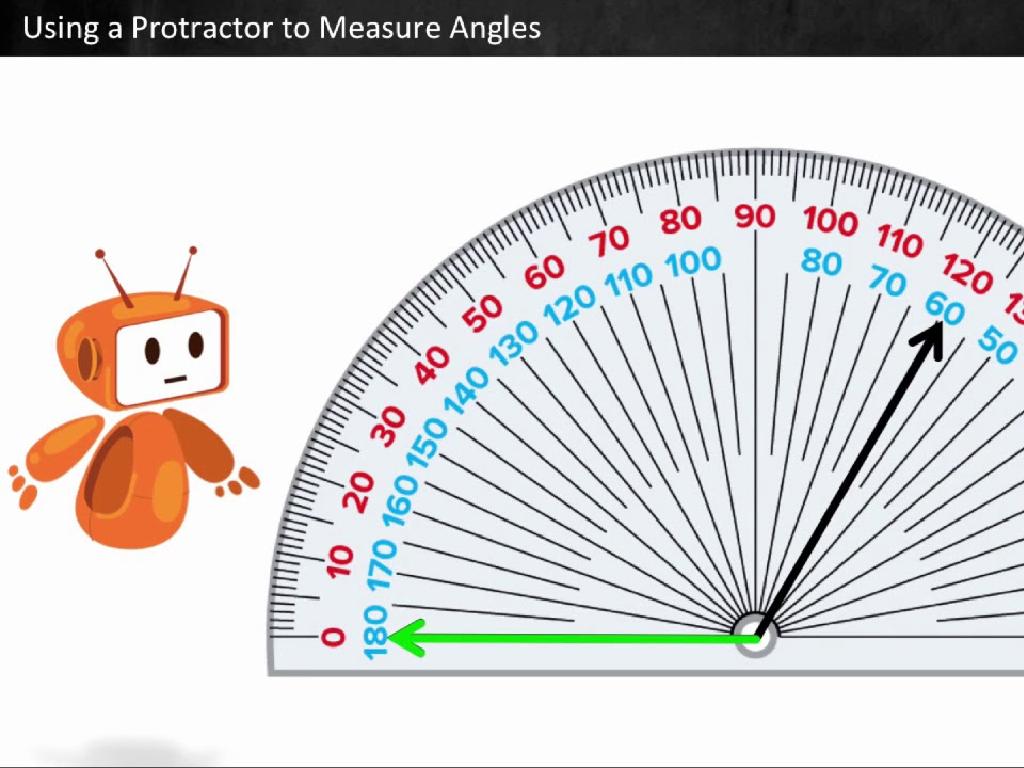Add And Subtract Decimals: Word Problems
Subject: Math
Grade: Sixth grade
Topic: Add And Subtract Decimals
Please LOG IN to download the presentation. Access is available to registered users only.
View More Content
Introduction to Decimals
– Refresh on decimals
– A decimal has a whole number and a fractional part, separated by a decimal point.
– Decimals in daily life
– Money amounts, measurements, and statistics often use decimals.
– Review decimal places
– Each place to the right of the decimal point represents a fraction of ten.
– Practice with examples
– Let’s add 3.75 + 1.2 or subtract 5.6 – 2.85 to practice.
|
This slide is aimed at refreshing students’ understanding of decimals, which are a fundamental part of mathematics, especially in practical applications like money and measurements. Start by explaining the structure of a decimal number, emphasizing the decimal point’s role in separating the whole number from the fractional part. Provide examples from everyday life to illustrate where decimals appear and why they are important. Review the place values to the right of the decimal point, such as tenths, hundredths, and thousandths, and how they relate to fractions of ten. Conclude with simple addition and subtraction examples to apply the concept of decimal place values in a practical context. Encourage students to think of other areas where they encounter decimals.
Adding Decimals in Word Problems
– Align decimals vertically
– Stack numbers so decimal points are in a line
– Use zeros as placeholders
– Fill empty decimal places with zeros to add easily
– Carry over in addition
– Just like whole numbers, sometimes we need to carry
– Practice with word problems
|
When teaching students to add decimals, start by emphasizing the importance of lining up the decimal points vertically. This ensures that the tenths, hundredths, and thousandths places are correctly aligned. Introduce the concept of using zeros as placeholders to help keep the numbers organized, making it easier for students to add. Explain carrying over in the context of decimals, which is similar to adding whole numbers. Provide word problems that require these skills, allowing students to apply what they’ve learned in practical scenarios. Encourage students to double-check their alignment and carry over to avoid common mistakes.
Subtracting Decimals: Step-by-Step
– Align decimals vertically
– Place numbers so decimal points line up
– Borrow from higher place value
– If needed, borrow just like in whole number subtraction
– Follow subtraction steps
– Subtract each column starting from the right
– Solve word problems
|
This slide is focused on teaching students the process of subtracting decimals through a step-by-step approach. Start by emphasizing the importance of aligning decimal points vertically to ensure accurate subtraction. Discuss the concept of borrowing from the next highest place value when the number in the current column is too small to subtract from. Walk through the subtraction process column by column, starting from the rightmost digit. Finally, apply these steps to solve word problems involving decimal subtraction, which will help students understand the practical application of the concept. Provide several examples and encourage students to practice with problems of varying difficulty.
Adding Decimals in Word Problems
– Carefully read the problem
– Understand the story and what is asked
– Find the decimals to add
– Look for numbers with decimals to combine
– Solve with decimal addition
– Line up the decimal points and add
– Check your work
– Review your solution for mistakes
|
This slide is aimed at helping students tackle word problems involving the addition of decimal values. Start by emphasizing the importance of reading the problem thoroughly to understand what is being asked. Students should identify all the decimal values that need to be added, paying close attention to the context of the problem. Teach them to line up the decimal points correctly and add the numbers, ensuring they understand place value. After solving, students should check their work for any possible errors. Encourage them to practice with various word problems to build confidence and proficiency in adding decimals.
Subtracting Decimals in Word Problems
– Comprehend the problem’s question
– Read carefully to understand what you need to find out.
– Identify decimals to subtract
– Look for and write down the decimal numbers given in the problem.
– Execute the subtraction step
– Use proper alignment of decimals before subtracting.
– Verify the solution’s accuracy
– Check your work by adding to see if you get the original number.
|
This slide aims to guide students through the process of solving word problems that involve subtracting decimals. Start by ensuring students understand the question being asked in the problem. Next, they should identify the decimal values involved and write them down clearly. When performing the subtraction, remind students to align the decimal points vertically to avoid errors. After finding the answer, they should verify it by adding the subtracted number to the result to see if it matches the original number. Encourage students to practice with real-world examples, such as subtracting prices or measurements, to reinforce the concept.
Practice Problems: Decimals in Action
– Solve decimal problems together
– Discuss problem-solving strategies
– Break down the problem, estimate the answer, and check your work.
– Class collaboration on examples
– Use whiteboards for calculations and group discussions.
– Review and clarify solutions
|
This slide is designed to engage the class in active problem-solving with decimals. Start by presenting a word problem that involves adding or subtracting decimals. Encourage students to participate in solving the problem step-by-step. Discuss different strategies they can use, such as breaking down the problem into smaller parts, estimating the answer before solving, and checking their work by reversing the operation. Work through several problems as a class, using whiteboards or other collaborative tools to allow students to visualize and discuss their calculations. After solving each problem, take the time to review the solution as a class, clarifying any misunderstandings and reinforcing the correct methods. This interactive approach helps students to better understand decimal concepts and apply them to real-world situations.
Class Activity: Grocery Shopping Challenge
– Real-world math application
– Receive a shopping list with prices
– Calculate your total bill
– Add the prices of all items on your list
– Determine the change from a given amount
– If you paid with a $50 bill, how much change would you get back?
|
This activity is designed to help students apply their knowledge of adding and subtracting decimals in a practical context. Each student will receive a mock shopping list with various items and their corresponding prices. They will need to add up the total cost of the items to find out their total bill. Then, they will be given a hypothetical amount of money that they have paid with, and they must calculate the change they would receive back. This exercise will reinforce their decimal operation skills and provide a tangible understanding of how these skills are used in everyday life. For the teacher: Prepare different shopping lists with items priced with decimals. Provide a ‘cash payment’ amount for each list, ensuring some require subtraction to find the change. Encourage students to double-check their calculations and discuss any challenges they faced during the activity.
Wrapping Up: Decimals in Action
– Review of decimal addition/subtraction
– Precision matters in decimal calculations
– Exactness in placing decimal points is crucial
– Homework: Decimal word problems worksheet
– Solve real-world problems involving decimals
– Practice makes perfect
|
As we conclude today’s lesson, it’s important to emphasize the key points covered in adding and subtracting decimals. Highlight the importance of precision in decimal operations, as this is crucial in everyday calculations such as money transactions. For homework, students are assigned a worksheet that includes various word problems to apply what they’ve learned. This practice will help solidify their understanding and prepare them for more complex mathematical concepts. Encourage students to approach each problem methodically, ensuring they understand the context before solving. Remind them to check their work for accuracy, especially the placement of the decimal point.





